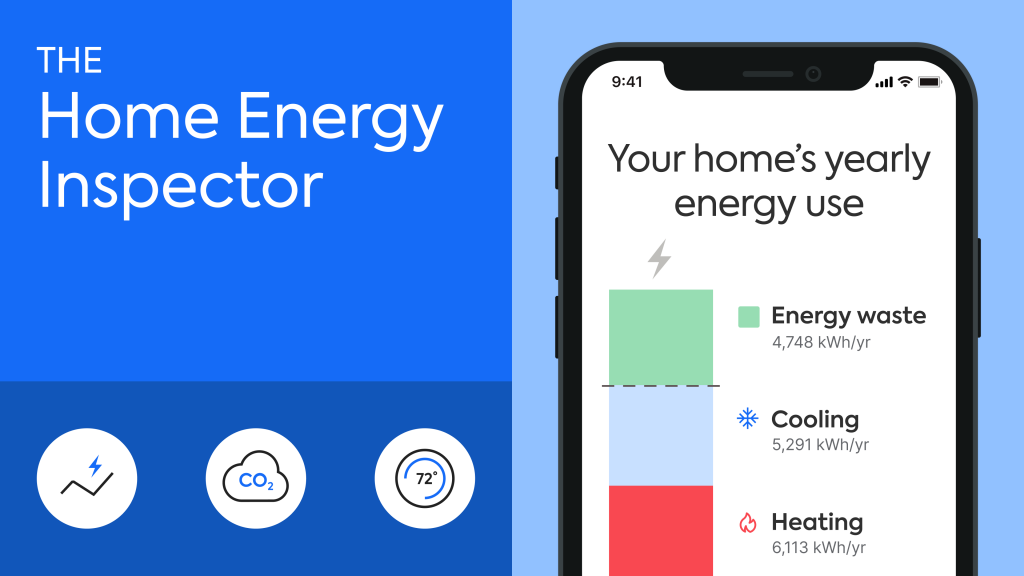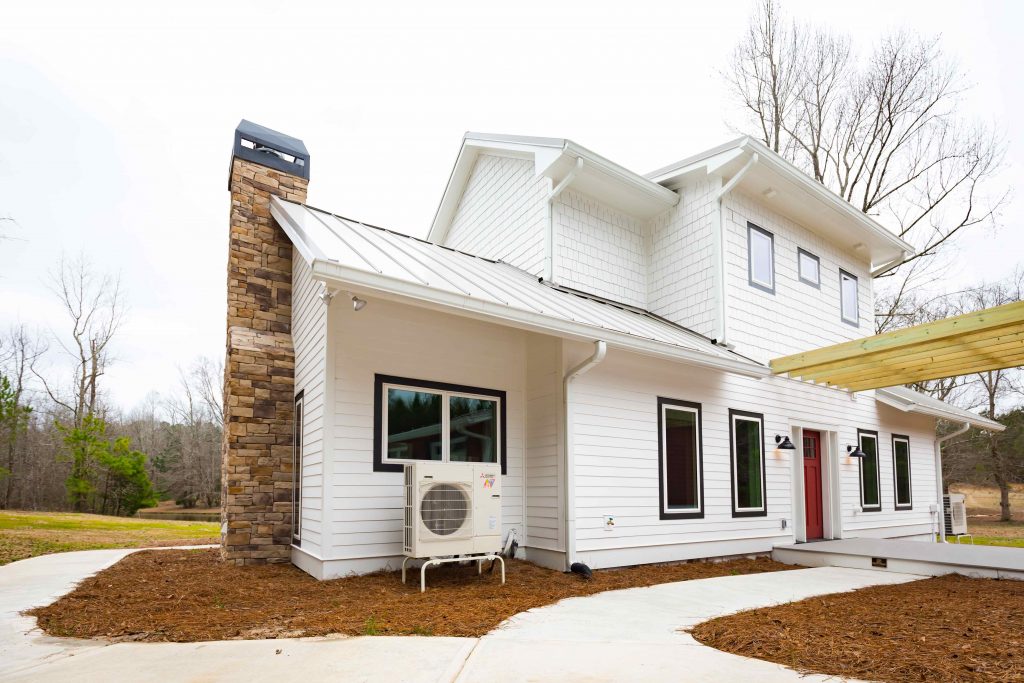Get all you need to know about the new rebates and tax credits in this homeowner guide.
Ready to see what Inflation Reduction Act tax credits and IRA rebates are available for energy-efficiency upgrades? Well, you’re in the right place!
In this homeowner guide, you’ll get plain-language answers to important questions around the Inflation Reduction Act… including clear details on how the legislation supports you in completing electrification projects that will reduce your home’s contribution to climate change.
But before you dive in, there’s something you need to know:
Sealed can help you get eligible rebates for powerful energy upgrades from our trusted contractor partners. Tap here to learn more.
Plus, here’s some more amazing news: The same key energy-efficiency home upgrades included in the Inflation Reduction Act can:
- Make your home more comfortable
- Increase your home’s value
- Protect your house’s structure and roof
- Improve your indoor air quality, and
- Stop a drafty house in its tracks
A healthier, more comfortable, more efficient home is now more accessible to more Americans through this new law? Yes, please!
Let’s dig in.
This IRA tax credits and rebates guide will cover the following:
- What you need to know about the Inflation Reduction Act as a homeowner
- What energy rebates and tax credits are going to be available
- When you can expect to have access to these incentives
- Who could qualify for the energy incentives
- Why you shouldn’t necessarily wait to get your home upgrades installed
- What energy rebates are available right now
- How to get home energy-efficiency upgrades
- FAQs about Inflation Reduction Act incentives
A bit of backstory on the new Inflation Reduction Act tax credits and rebates
On August 16, President Biden signed the Inflation Reduction Act (IRA) of 2022 into law.
This groundbreaking legislation provides billions of dollars—over $10 billion in fact—in federal home energy rebates, market incentives, and tax credits to help households slash energy waste, use renewable energy, and install powerful energy-saving home upgrades (like heat pumps!).
The IRA is the most robust action to combat climate change ever taken by the United States federal government. (Hurrah!)
Residential housing accounts for approximately 20% of all U.S. greenhouse gas emissions—and the new law provides much-needed financial support through cash rebates, market incentives, and a 10-year extension of an improved residential energy-efficiency tax credit.
And expert analyses are showing that the new legislation has the potential to reduce national greenhouse gas emissions by up to 40% (1, 2).
The financial incentives included in the Inflation Reduction Act will help American households—regardless of income—stop energy waste, electrify their homes, and create a cleaner planet. That’s a win for us all!
Save energy. Feel better. Get t home energy upgrades.
Top things to know about the Inflation Reduction Act rebates and tax credits as a homeowner
Here are the key parts of the new law that apply to home-energy upgrades and home electrification.
- Homeowners can receive a few-hundred-dollar tax credit for heat pumps and weatherization projects that are installed in the 2022 tax year.
- Starting January 1, 2023, those tax credits increase to $1,200 for weatherization (things like air sealing and insulation) and $2,000 for heat pumps and heat pump water heaters. Check out our guide to the 25c tax credit increases to learn more.
- Any additional cash rebates, if you are eligible, won’t be around until the end of 2023 or start of 2024. But why does it take so long for the new program rollout? Well, first, funds are allocated from the federal government to the state government. Then the state government has to create new programs to oversee the funds. This process just takes time.
(Existing rebates from your local state or utility program are still available for now. If you live in New York, see our energy rebate calculator here.) - Eligibility rules and cash rebate values for these programs will be defined by your state as part of their work to create the program. And the law includes incentives for both single-family and multifamily residences. For a quick estimate of what could be available, check out this nifty calculator from our friends at Rewiring America.
- At least 40% of the Inflation Reduction Act’s program budgets will likely be reserved for low-income to moderate-income households to make home energy efficiency and electrification more accessible to this group. The cash rebates and market incentives for low-to-moderate income households will be higher than the tax credits available and could be implemented at the point-of-sale in some instances.
That’s just a high-level look at how this new law affects incentives for energy-efficient home upgrades.
We’ll dive in deeper below, but if you’re a detail-oriented researcher, you can find the Inflation Reduction Act of 2022 in full PDF here or you can check out the fact sheets released by the White House for each state.

What energy rebates and clean energy tax credits will be available to improve my home?
It’s best to think of the Inflation Reduction Act’s climate and energy home-upgrade incentives in three parts:
- The 25C Energy Efficiency Home Improvement tax credit
- The High Efficiency-Electric Home Rebate (HEEHRA) Program
- The HOMES Rebate Program
It’s important to know upfront that the HEEHRA program and HOMES rebates cannot be combined with one another.
However, the 25C tax credit could possibly be combined with either the HEEHRA or HOMES program, depending on released guidelines.
The rules for each program will be set by the Internal Revenue Service (IRS) and the U.S. Department of Energy (DOE).
Let’s dig into each financial incentive below.
The 25C Energy Efficiency Home Improvement tax credit
This home improvement tax credit has been around for a while, but the Inflation Reduction Act increases the value of the tax credit by 20% and makes it possible for you to receive a benefit each year.
(Originally, this tax credit was limited to 10% of your project costs but has increased to up to 30% under the new legislation. Hooray!)
The value of the tax credit is annually capped at the following:
- $2,000 for heat pumps (both air source and geothermal), heat pump water heaters, biomass stoves, and boilers
- $1,200 for weatherization installs (like air sealing and insulation work) and electrical panel upgrades that allow for the use of a qualified energy-efficiency upgrade
A few essential notes about the tax credit you should know:
- It’s capped at $2,000 annually.
- It’s only available to offset tax liability. That means you’ll only be able to claim it if you owe some money back in taxes. (Make sure to talk with a tax professional to determine your individual eligibility.)
Another thing: Before you choose your upgrades, there are some important things to consider.
Depending on the type of heating system you choose and where you live, heating oil, propane, and natural gas can be more expensive than using electricity to heat your home.
Electric heat pump HVAC systems are 3 times more efficient than traditional heating systems, like boilers or furnaces. Tap here for the new heat pump tax credits and rebates guide.
Check out these recommended resources when deciding how to use these tax credits to your best advantage:
- Natural gas and electric appliances: Do you need fossil fuels in your home?
- What you should know before going solar
- Converting from oil to electric heat or Switching from gas to electric heat
- Why home energy audits are a good place to start
You could cut up to 50% of your energy use when getting high-performance insulation, professional air sealing, and heat pump HVAC upgrades from a Sealed-vetted contractor. Learn how.
What’s the timeline on the 25C energy-efficiency home improvement tax credit being available?
The increased tax incentives will go into effect in 2023. That means if you install a home energy-efficiency project in 2023, you may be eligible to claim the credit when you file your taxes in 2024.
If you’re still working on 2022 taxes, ENERGY STAR has some great resources on the existing 2022 tax credits, but we also recommend you work with a tax professional to review your eligibility and application.
(If you work with Sealed, we’re here to provide any documentation you may need!)

Ready to crunch the numbers?
Check out our home energy usage calculator to see where you could cut energy waste BIG TIME.
The High-Efficiency Electric Home Rebate program (HEEHRA rebates)
The Inflation Reduction Act allocated $4.275 billion to the new High-Efficiency Electric Home Rebate (HEEHRA) program.
As we mentioned earlier, these funds have to be rolled out from the Department of Energy to your State Energy Office.
The State Energy Office will be responsible for setting up your state’s HEEHRA program which focuses on providing rebates to households with a total annual income that’s less than 150% of the local area median income.
(The local area median income will be defined and determined by your state.)
The program’s maximum rebate values include:
- $8,000 for an electric heat pump HVAC system (FYI: heat pumps are both air conditioners and heaters in one appliance)
- $4,000 for an electric panel upgrade
- $2,600 for electric wiring
- $1,750 for an electric heat pump water heater
- $1,600 for insulation
- $840 for an electric stove or cooktop
- $840 for an electric heat pump clothes dryer
The total combined rebate cannot exceed $14,000 per household.
It’s important to remember that the eligibility for HEEHRA rebates is income based. The rebate values aren’t guaranteed for every household.
What’s the timeline on the HEEHRA rebate program being available?
This program is expected to roll out through individual states at the end of 2023 or beginning of 2024.
The HOMES rebate program
The Inflation Reduction Act also created a brand-new $4.3 billion program called the Home Energy Performance-Based, Whole-House rebate program, referred to as the HOMES rebate program for short.
Like the HEEHRA program, the HOMES rebate program will be overseen by your state’s State Energy Office.
But unlike the HEEHRA program, the incentives available through the HOMES program aren’t restricted by income and are based on the performance of your whole-home energy-efficiency and electrification improvements.
In traditional cash rebate programs, you receive a cash rebate when your upgrade is installed—but there isn’t any guaranteed performance. This puts the risk and responsibility of finding a high-quality contractor, managing your energy upgrades, and monitoring your energy costs and project performance on you.
The HOMES rebate program shifts performance accountability to the contractor, installer, or home performance company. All you’ll need to worry about is agreeing to a project price that fits your budget.
What’s the timeline on the HOMES program being available?
This program is expected to start rolling out through individual states at the end of 2023 or beginning of 2024.
Okay, now that you know about the new programs and changes to energy-upgrade incentives, don’t split just yet… should you wait a year (or more!) to install your residential clean energy upgrades?
Or should you move forward with home energy retrofits right now?
Well, that’s what we’re talking about next.
Should you wait to get home upgrades until the new Inflation Reduction Act rebates take effect?
This is a good question—and for most people it’s not a good idea to put off your home’s energy upgrades. And here are 5 reasons why.
- The current state and utility rebates available to you may not be around much longer. And depending on your income qualifications, the federal rebates may not be as much of an incentive. In addition, we don’t know how the federal rebates will align with the local state and utility programs that are currently available, and it’s possible the introduction of federal rebates may result in lower local rebate programs for energy upgrades.
- Inflation on energy-efficient home appliances and equipment is likely to continue. That means the rebates for qualifying upgrades like heat pump HVAC, heat pump water heaters, insulation, and air sealing could be offset with higher equipment prices, which could mean less savings than initially expected.
- Energy prices are rising. Natural gas is the most expensive it’s been since 2008, which directly affects your electricity bill, too. It’s predicted to stabilize soon, but the rising cost of energy affects us all. And the best way to mitigate it is to reduce your home’s energy use today. Learn why natural gas is so expensive right now in our guide.
- Contractors and technicians will be inundated with demand in the near future. Make sure your project gets installed in a timely manner by moving forward—that way, you can start cutting energy waste ASAP without having to wait months in a project queue.
- You deserve to live in a healthy, comfortable home. Waiting another one or two years to get the work done means another sauna-like summer and drafty winter—as well as continued winter ice dams that can damage your home (this is not often covered by homeowners insurance). A too-hot or too-cold house can have indoor air quality issues and affect your health, too, but at the end of the day, it’s just plain annoying to have uneven, uncomfortable temperatures.
Overall, demand will increase and inflation is likely to continue.
Making moves now to make your home feel better and protect your house against the rising cost of energy is still a good idea.

Get home energy upgrades—plus eligible rebates—with Sealed
Energy rebates, tax credits, financial incentives, oh my! It’s a lot of info to digest and untangle.
When you’re ready to make energy-efficient home upgrades, there’s a lot to consider (and project manage).
But with Sealed, the process is hassle-free. We’re staying on top of all the new tax credit and rebate rollouts so you don’t have to.
If your house is eligible, you can get an energy-efficient heat pump HVAC, high-performance insulation, and professional air sealing, and weatherization, and we’ll make sure you get any available rebates that you qualify for.
Complete our easy 2-minute questionnaire to get started.
FAQs about the Inflation Reduction Act
Don’t see your question here? Call us at 917-382-3729.
- What incentives are available for solar?
- What incentives are available for EVs?
- Can IRA tax credits and rebates help reduce my energy bills?
- What do the new rebates mean for current Sealed customers?
What federal incentives are available for residential solar upgrades?
So what about solar? Under the 25D tax credit, you could be eligible for a credit up to 30% of the costs of installing rooftop solar panels (capped at $3,200 per year). These credits are for solar installations with battery storage as well as standalone battery storage installed without solar (3).
What federal incentives are available for electric vehicle (EV) purchases?
Starting in 2023, you could be eligible for a tax credit of up to $7,500 for a qualifying new electric vehicle purchase or up to $4,000 for a qualifying used electric vehicle purchase (4).
In the US, people use 30% more energy to run their households than their personal vehicles.
Source: EIA
Can IRA tax credits and rebates help reduce my energy bills?
The cost of energy is going up, and making energy-efficiency upgrades—like switching to a heat pump, properly insulating your house, and professional air sealing—can conserve energy at home. Thankfully, IRA rebates and tax credits can help incentivize these upgrades!
But make sure to check your energy usage on your energy bills and not just your energy costs. The goal is to see your usage going down, even while energy costs are rising across the globe.
What do the new rebates mean for current Sealed customers?
If you’re currently a Sealed customer, you may still have access to some of these incentives.
Remember the 25C Energy Efficiency Home Improvement tax credit we talked about earlier?
Well, the existing version of that tax credit has been retroactively extended until the end of 2022, which means you may be eligible for a few hundred dollars in tax credits if your equipment and install qualifies!
Your upgrades will need to meet the tax credit eligibility requirements, which you can learn more about on ENERGY STAR’s website.
Remember, you’ll also need to confirm that you are eligible for the 2022 25C tax credit with a tax professional or accountant.
Not a Sealed customer yet, but ready to install? Check out how you could get energy-efficient home upgrades with Sealed.